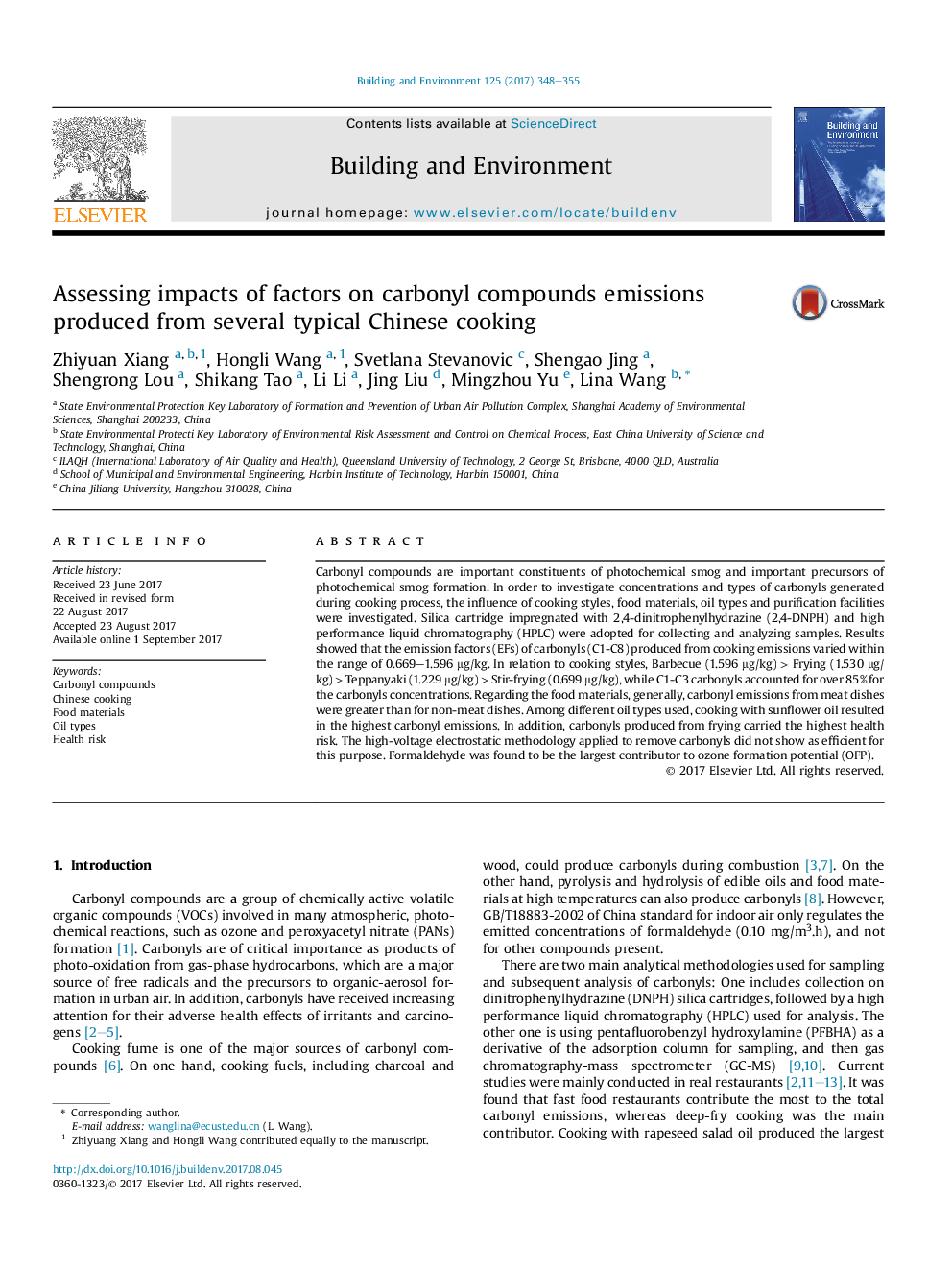| کد مقاله | کد نشریه | سال انتشار | مقاله انگلیسی | نسخه تمام متن |
|---|---|---|---|---|
| 6479236 | 1428367 | 2017 | 8 صفحه PDF | دانلود رایگان |
- C1-C3 carbonyl compounds accounted for over 80% of the total carbonyls from cooking emissions.
- The rank of carbonyl compound concentrations considering cooking styles: barbecue > deep-frying > teppanyaki > stir-frying.
- The rank of carbonyl compound concentrations considering food materials: meat dishes > non-meat dishes.
- Sunflower oil produces the highest carbonyls, especially for barbecue.
- Cooking style of frying was the worst to human health and formaldehyde contributes highest OFP.
Carbonyl compounds are important constituents of photochemical smog and important precursors of photochemical smog formation. In order to investigate concentrations and types of carbonyls generated during cooking process, the influence of cooking styles, food materials, oil types and purification facilities were investigated. Silica cartridge impregnated with 2,4-dinitrophenylhydrazine (2,4-DNPH) and high performance liquid chromatography (HPLC) were adopted for collecting and analyzing samples. Results showed that the emission factors (EFs) of carbonyls (C1-C8) produced from cooking emissions varied within the range of 0.669-1.596 μg/kg. In relation to cooking styles, Barbecue (1.596 μg/kg) > Frying (1.530 μg/kg) > Teppanyaki (1.229 μg/kg) > Stir-frying (0.699 μg/kg), while C1-C3 carbonyls accounted for over 85% for the carbonyls concentrations. Regarding the food materials, generally, carbonyl emissions from meat dishes were greater than for non-meat dishes. Among different oil types used, cooking with sunflower oil resulted in the highest carbonyl emissions. In addition, carbonyls produced from frying carried the highest health risk. The high-voltage electrostatic methodology applied to remove carbonyls did not show as efficient for this purpose. Formaldehyde was found to be the largest contributor to ozone formation potential (OFP).
Journal: Building and Environment - Volume 125, 15 November 2017, Pages 348-355
